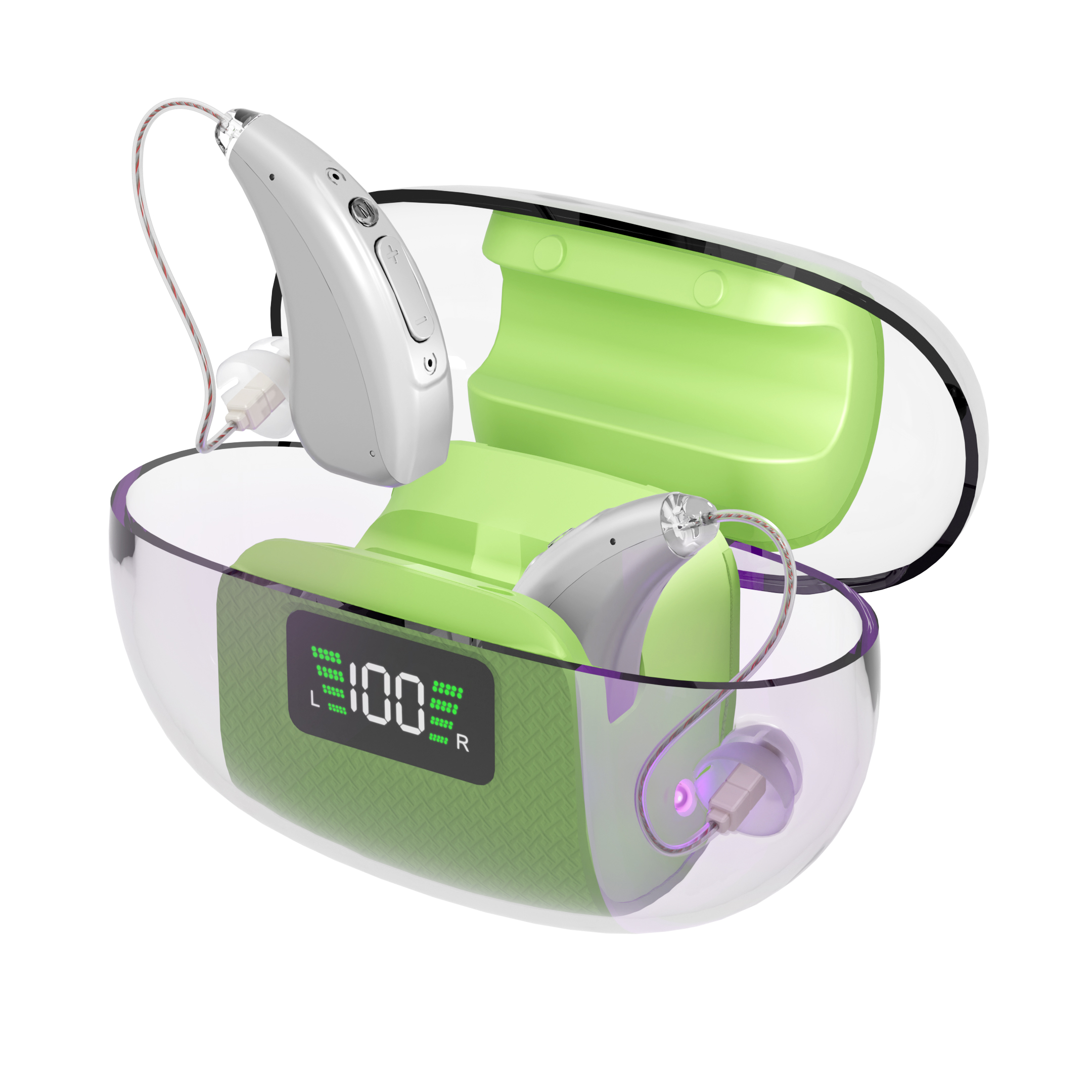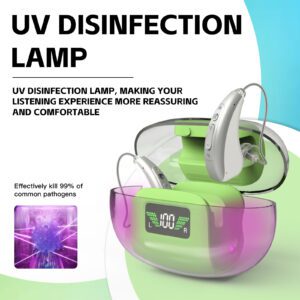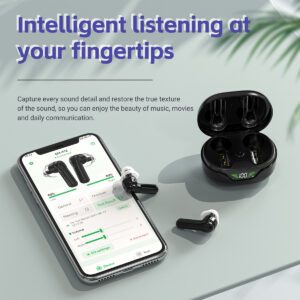There are five main types of hearing aids: Behind-The-Ear (BTE), Receiver-In-Canal (RIC), In-The-Ear (ITE), In-The-Canal (ITC), and Completely-In-Canal (CIC). Each type offers different features, sizes, and performance levels to suit various degrees of hearing loss and personal preferences.
Knowing the differences between them helps you match the right product to your needs—whether you want advanced technology, discreet design, or ease of use.
What is a Behind-The-Ear (BTE) hearing aid?
A BTE hearing aid rests comfortably behind the ear and connects to a custom ear mold or dome via a clear tube.
Research findings show that BTEs to be ideal for people with moderate to profound hearing loss because they offer strong amplification and are easy to handle.
They also come with large batteries, making them suitable for extended use, and many models are rechargeable or Bluetooth-enabled.
How is Receiver-In-Canal (RIC) different from BTE?
A RIC hearing aid is similar in shape to a BTE but is smaller and more discreet. The receiver (speaker) is placed inside the ear canal instead of the main body.
This gives you more natural sound quality and allows the device to stay lightweight and low-profile.
RICs are best for mild to moderate hearing loss and are a popular choice for those seeking comfort and performance.
What are In-The-Ear (ITE) hearing aids like?
In-the-ear (ITE) hearing aids offer a balance between visibility and functionality.
Unlike behind-the-ear (BTE) models, ITE hearing aids have no visible external wires or tubes, making them one of the most discreet styles available. All components—including the microphone, amplifier, and speaker—are housed within a single shell that sits flush with the ear.
Many people like ITE models for their ease of handling and comfort. They’re ideal for individuals with mild to severe hearing loss and can accommodate additional features like volume controls, telecoil, or Bluetooth connectivity, depending on the size and model.
For people who prefer a cleaner aesthetic without sacrificing performance, ITE hearing aids are a smart, professional choice—especially for those seeking a good balance between visibility, customization, and technology.
What are Completely-In-Canal (CIC) hearing aids?
CIC hearing aids are tiny and fit entirely inside the ear canal, making them almost invisible. Many people like how discreet they are, though they can be harder to adjust or clean.
These are great for mild to moderate hearing loss and for those who prefer a very subtle solution.
Since they’re smaller, they often don’t include directional mics or Bluetooth, but their comfort and aesthetics are unmatched.
Are Invisible-In-Canal (IIC) hearing aids even smaller?
Yes. IIC hearing aids are the smallest available and sit deep within the ear canal, making them invisible to others.
They are best for mild hearing loss. However, due to their size, they usually don’t have advanced features or long battery life.
Still, for cosmetic reasons, IICs can be the perfect fit for some users.
What type of hearing aid is best for you?
Choosing the right type depends on several factors: the degree of your hearing loss, your manual dexterity, lifestyle, and appearance preferences.
For example, if you have severe hearing loss, a BTE might be the best choice. But if you value aesthetics, CIC or IIC models may work better.
Trying different styles and consulting with a specialist can help narrow down the best option.
Are there hearing aids with Bluetooth and smart features?
Yes, many modern hearing aids now come with Bluetooth connectivity, allowing you to stream calls, music, and TV audio directly to your ears.
Nowadays, almost all types of hearing aids offered by our company can be customized with Bluetooth function. If you want to know more, you can contact us.
What if you want rechargeable hearing aids?
Rechargeable hearing aids are now widely available, and almost all types of hearing aids have the feature of being rechargeable.
Instead of changing disposable batteries, you just place them in a charging case overnight. This is more convenient and eco-friendly for daily use.
Some models even include programmable hearing aids or UV disinfection features, adding even more convenience to your routine.
Now that you know the main types of hearing aids—BTE, RIC, ITE, ITC, CIC, and IIC—you’re better prepared to make an informed decision based on your hearing needs and preferences.
Each type offers distinct advantages, whether you prioritize power, size, discretion, or smart features.
If you’re a hearing aid distributor or wholesale buyer looking for high-quality or OEM/ODM hearing aids, contact us today for catalogs, pricing, and expert support. We’re ready to help you find the best products for your market.







